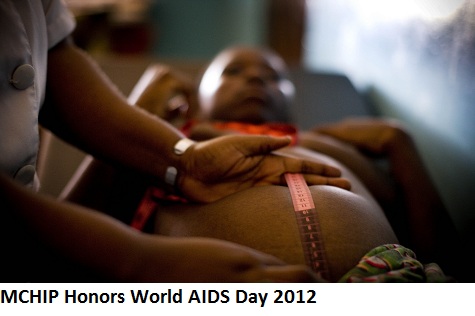New way to finance health in world’s less developed nations
Countries and major donors are changing the way they finance maternal and child, malaria, tuberculosis and HIV/AIDS health programs in low-income countries to increase their impact.
The approach, called Results-Based Financing for Health, or RBF, pays providers or recipients of health services after pre-agreed results have been achieved and independently verified.
RBF is a change from paying for inputs to paying for services delivered. It works for both donors and developing countries. It assures donors that their funds are being used as intended and producing the desired results. This includes how countries disburse their own resources.
Early research shows that countries that use RBF can get 20 percent more health care for the same amount of money with a higher quality of care. “Evidence shows that results-based financing has a significant impact – saving lives and expanding access to quality, essential health services for the poorest women and children in developing countries,” says Jim Yong Kim, President of the World Bank Group.
UN Secretary General Ban Ki-moon, whose multi stakeholder partnership, Every Woman Every Child, is sparking important gains, says: “Innovative approaches to financing are urgently required to meet the health needs of the world’s women and children. Results-based financing can improve the quality and efficiency of services and, just as important, enhance equity.”
“RBF shows the way for changing aid from a focus on input to a focus on results and outcomes and thus provides a promising new modality complementary to systemic approaches,” says Chancellor Angela Merkel of Germany. Norway and Germany are implementing an innovative RBF approach in Malawi to improve maternal health.
 In Rwanda, the government decided to implement a national RBF scheme, paying incentives for the delivery of quality maternal and child health services. The rigorous evaluation showed that the program improved both the coverage as well as the quality of health services. The results also showed that an equal amount of financial resources without the incentives didn’t achieve the same gain in outcomes.
In Rwanda, the government decided to implement a national RBF scheme, paying incentives for the delivery of quality maternal and child health services. The rigorous evaluation showed that the program improved both the coverage as well as the quality of health services. The results also showed that an equal amount of financial resources without the incentives didn’t achieve the same gain in outcomes.
“Rwanda proves that RBF can be successful under almost any conditions if we support the process,” says Ambassador Claver Gatete, Minister of Finance and Economic Planning in Rwanda.
“Simply, incentives work effectively,” says Norwegian Minister of Foreign Affairs Børge Brende. “We have proved this method with the evaluations, and continue to carry these out in more than a dozen countries.”
“This approach to delivering aid aims to ensure every penny we spend on life-saving health program produces real results. It is good for donors, good for taxpayers and, most importantly, good for the millions of people across the developing world who desperately need access to better healthcare,” says Lynne Featherstone, UK International Development Minister.
Created in 2007, the Health Results Innovation Trust Fund, managed by the World Bank, is supporting 36 RBF programs in 31 countries, committing $404 million of donor funding from the Governments of Norway and the United Kingdom, which is co-financing to $1.6 billion from the International Development Association. About 75 percent of HRITF funding supports programs in sub-Saharan Africa, which bears over half the global burden of maternal mortality.
RBF approaches, funded by the HRITF and through other sources of funding have contributed to:
In Tanzania, 24-hour staffing for birthing clinics where poorly paid staff were working only for a few hours.
In Burundi, over just one year, births at health facilities rose by 25 percent, prenatal consultations went up by 20 percent and the number of children fully vaccinated increased by 10 percent.
In Argentina, a 74 percent decline in neonatal mortality.
In India, an increase from 700,000 to 12 million women using clinics and hospitals to deliver babies.